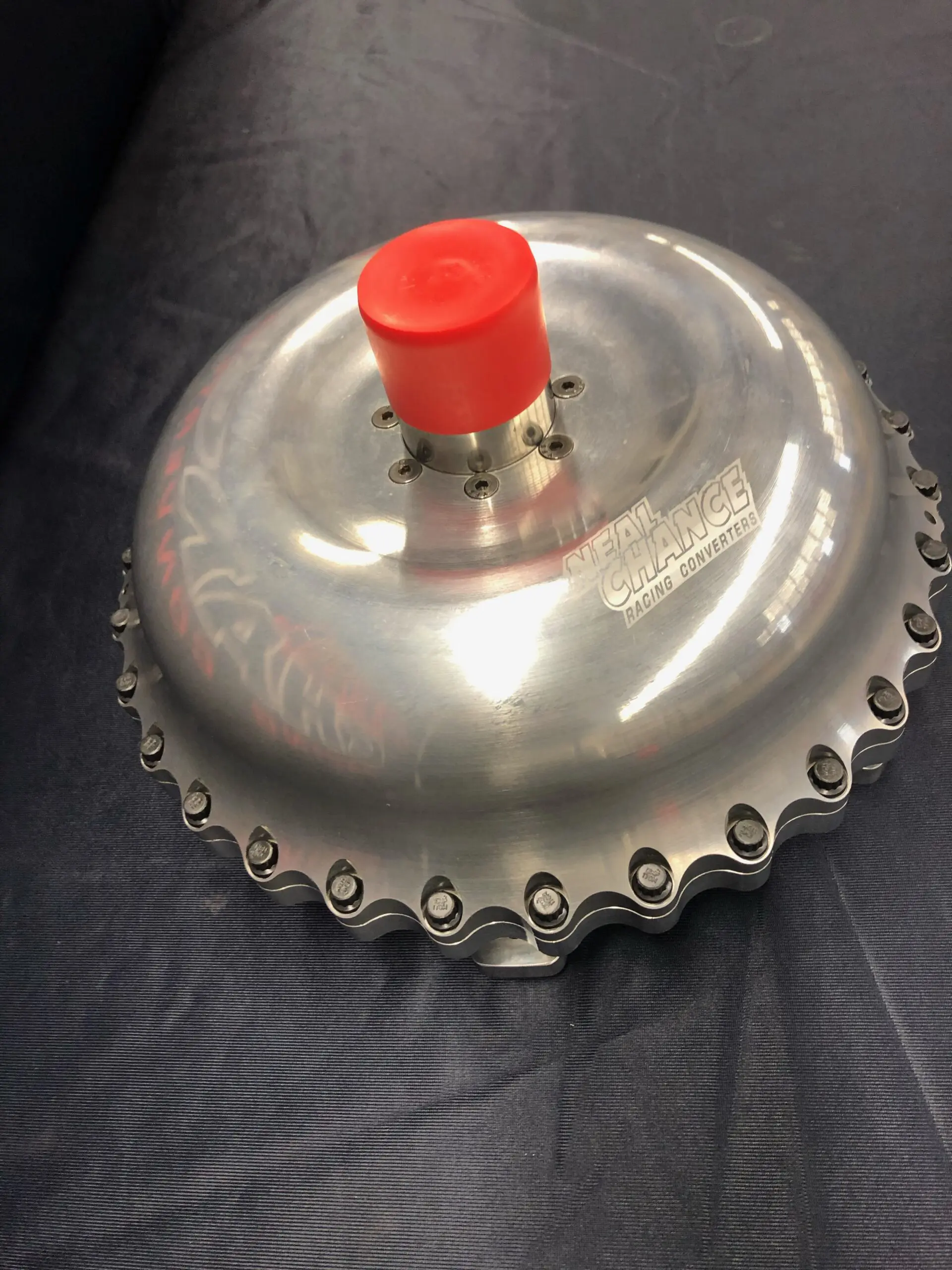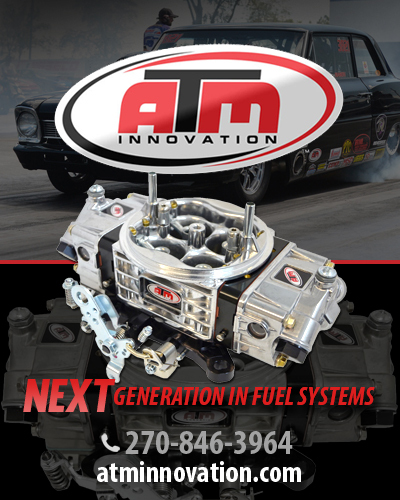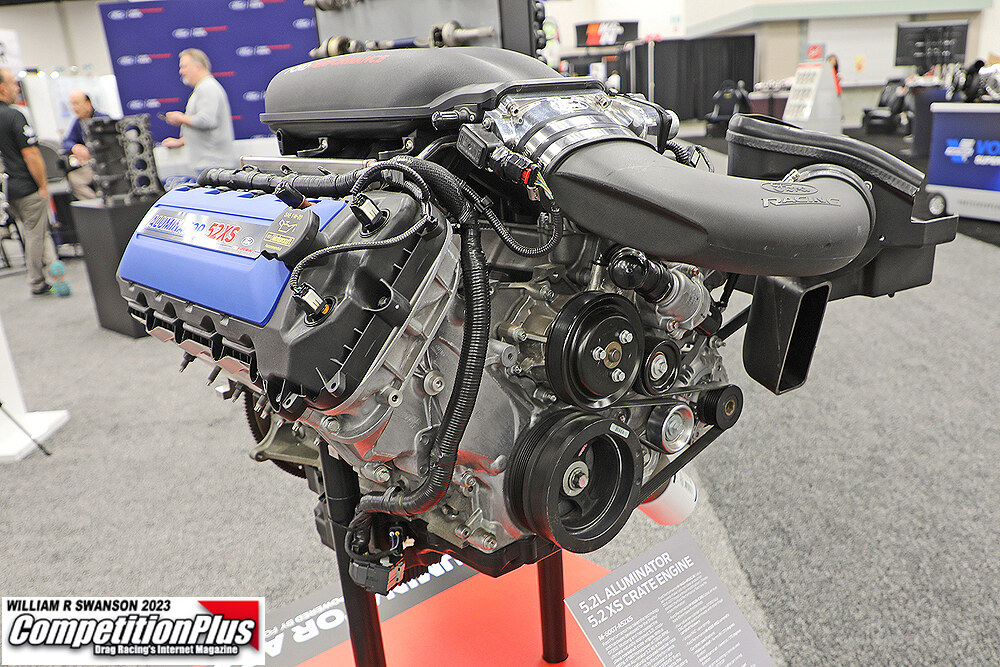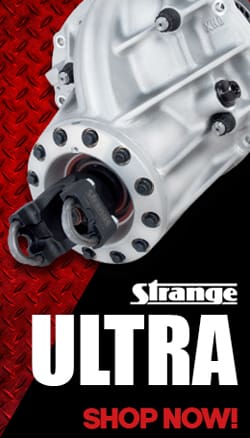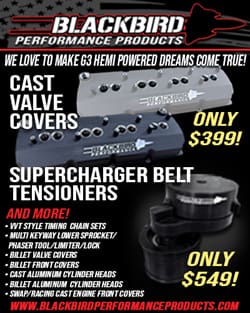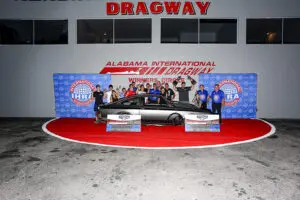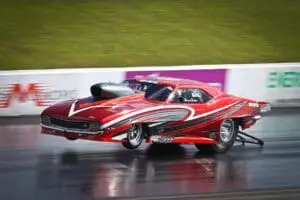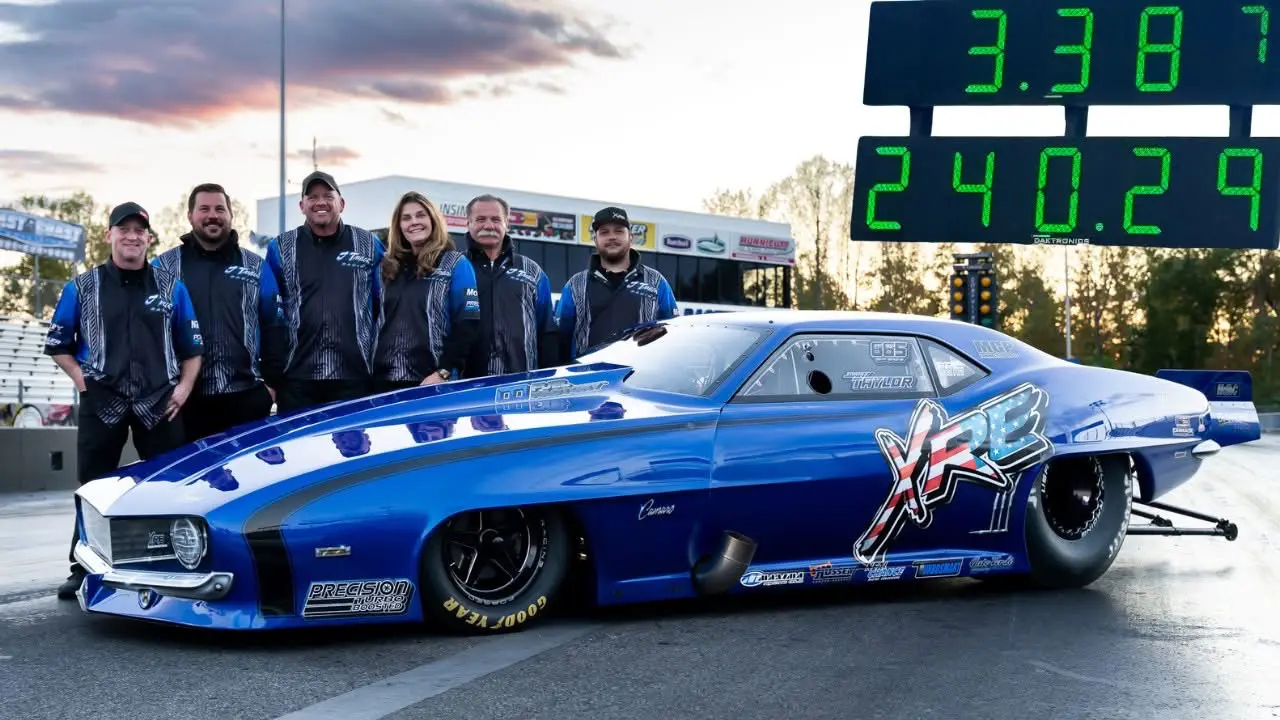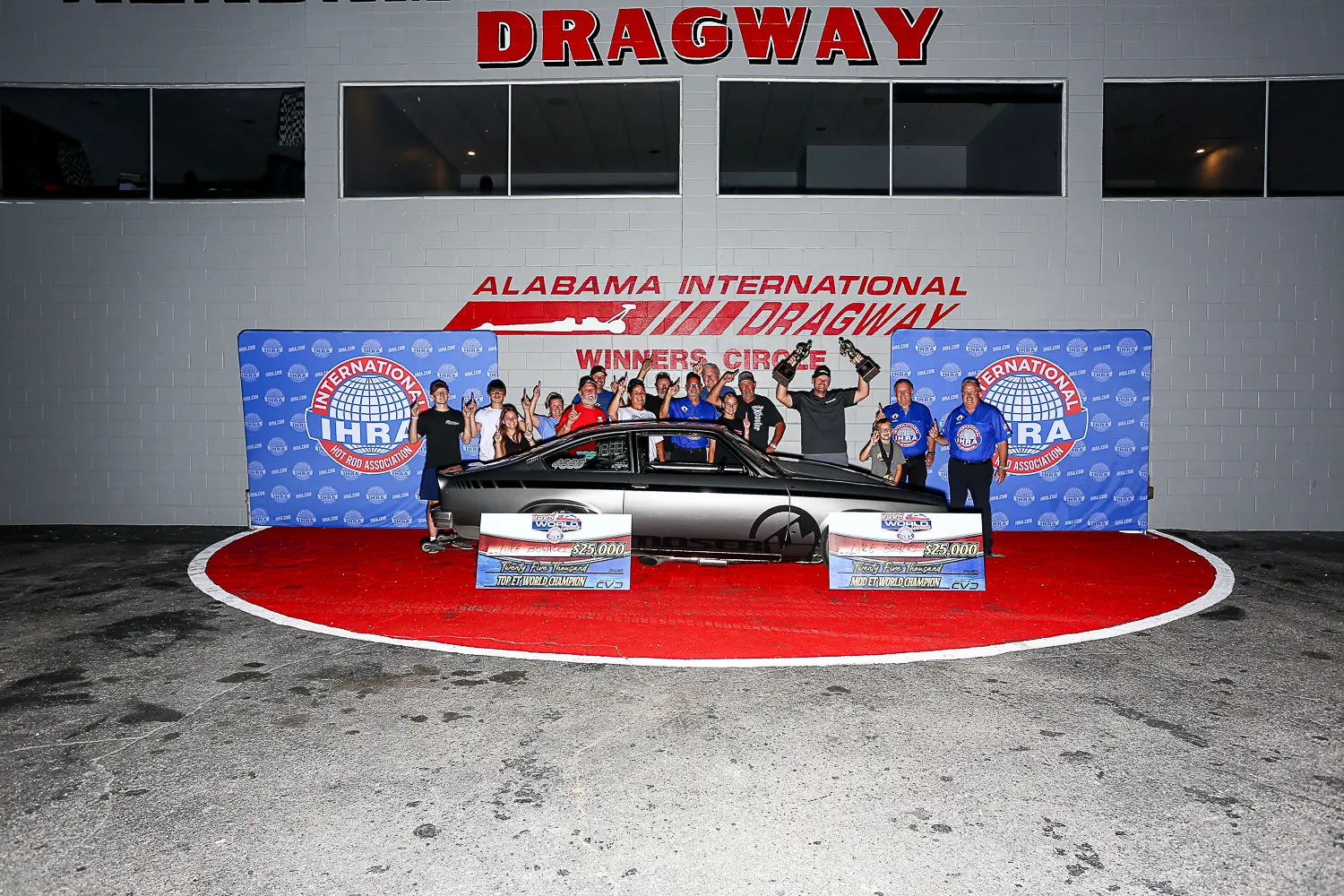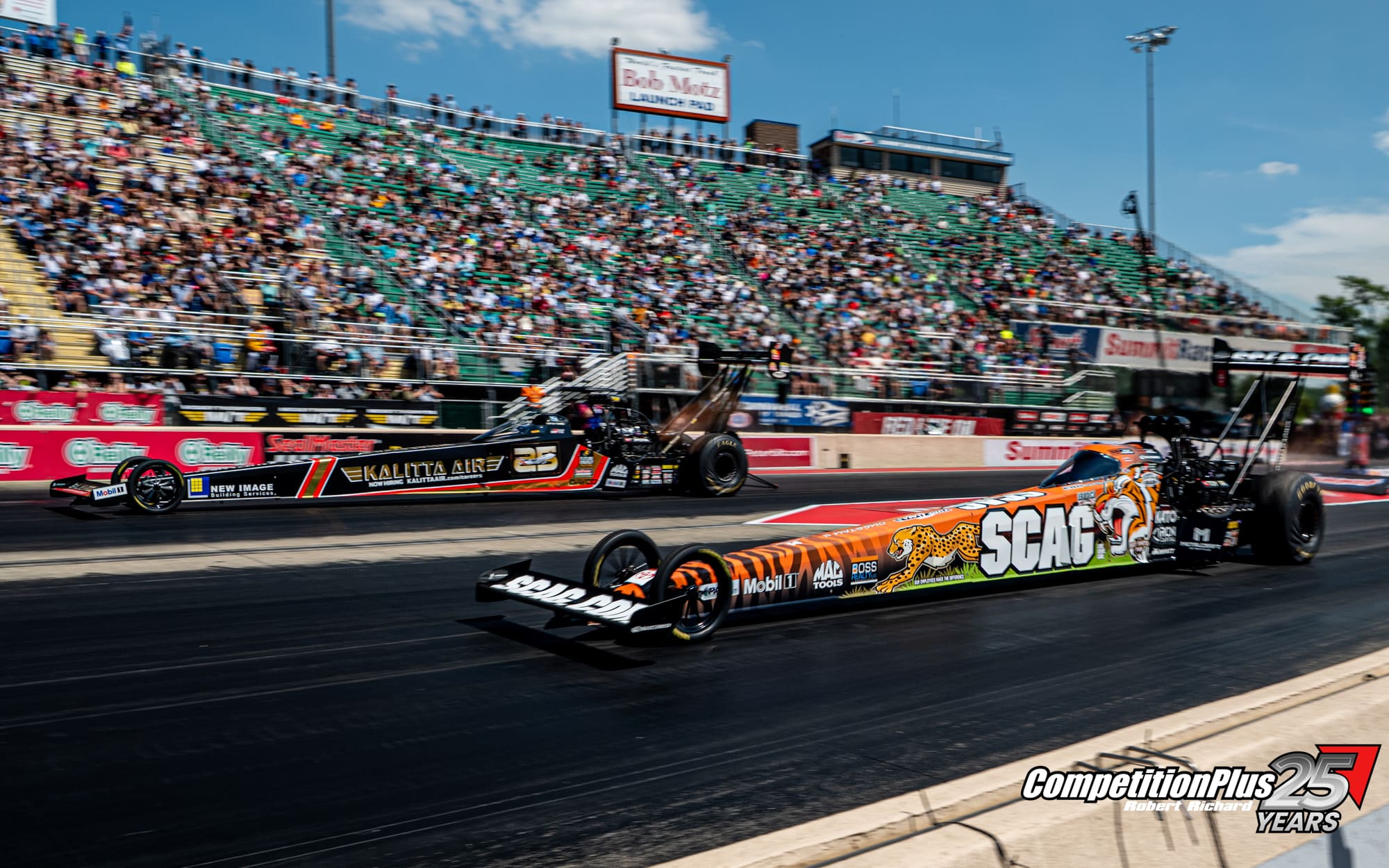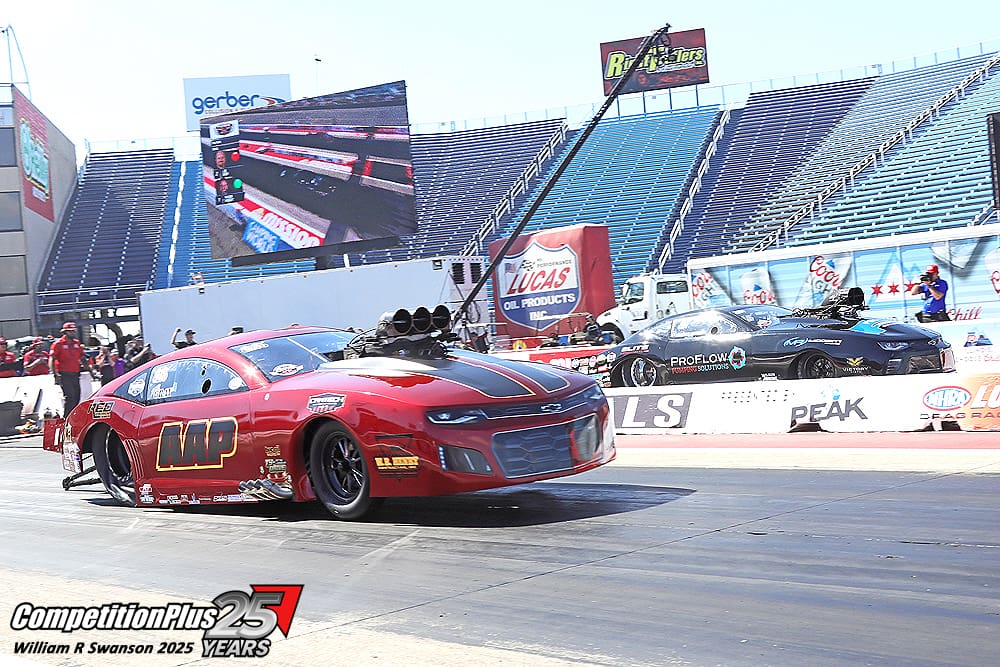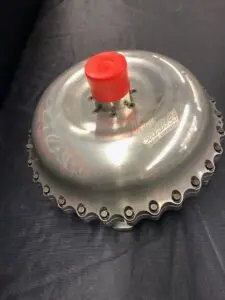A crucial piece of hardware helped Jimmy Taylor make drag racing history. According to crew chief and engine builder Carl Stevens Jr., the record-shattering 3.38-second eighth-mile pass was made possible in part by a one-of-one billet titanium Neal Chance torque converter.
“To be honest, the converter was everything in making it happen,” Stevens said. “The piece he built us, it’s just wild. It’s one of one. It’s a full billet titanium lock-up converter. The thing’s almost too nice to stick in the car. You look at it, you’re like, ‘Damn, I got to go beat this thing up?’”
The converter’s precision and durability allowed Stevens to unleash the full potential of Taylor’s twin-turbo Camaro. “It’s a pretty trick piece for sure,” he said. The custom-built unit could withstand the immense power output while keeping the driveline stable during the record run.
Taylor first made headlines with a 3.454-second blast at 234.09 mph. Using data from that pass, Stevens loaded a more aggressive tune, leading to a 3.430 at 237.09 mph. That run included a .937 60-foot and a 2.380 at the 330-foot mark, signaling that a 3.30-range pass was within reach.
Soon after, Taylor delivered on that prediction. His Camaro roared to a 3.387-second, 240.29 mph eighth-mile, setting a new world record for a door car. The numbers—2.351 at the 330 and .930 in the 60-foot—confirmed the car’s blistering potential. Ironically, Taylor said the stat that made him proudest was his .014 reaction time.
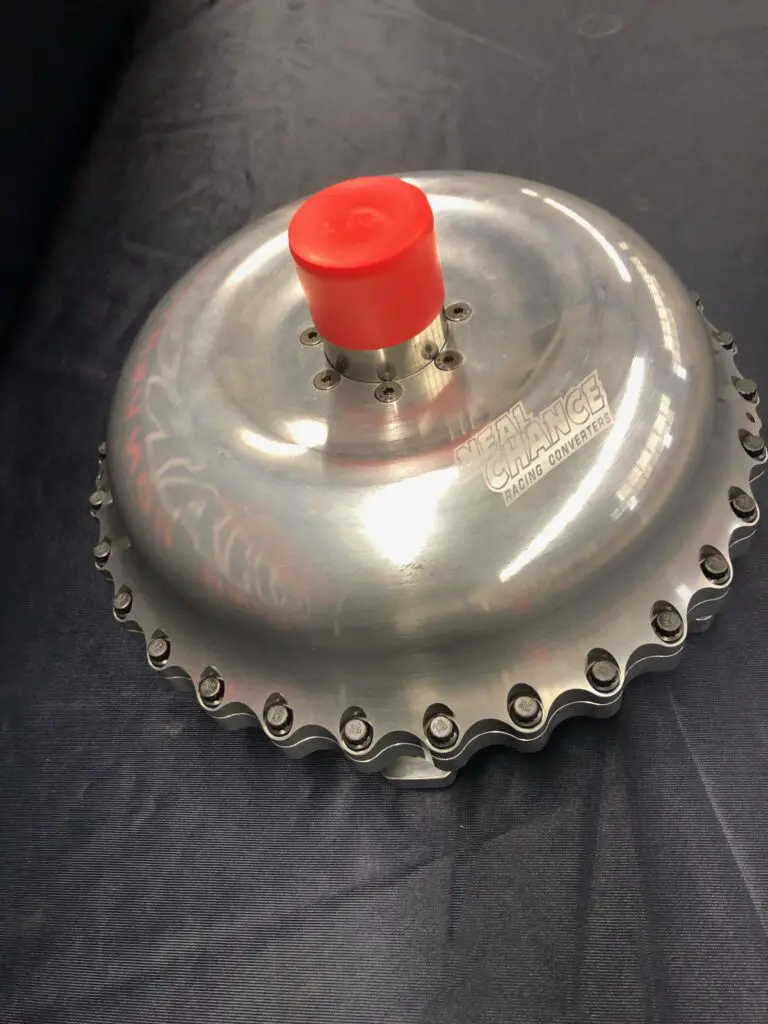
Behind the scenes, the converter’s engineering was a balancing act in hydraulic dynamics. Neal Chance Racing Converters Marty Chance explained how upgrading from an inch-and-three-sixteenths to an inch-and-a-quarter input shaft required careful recalibration. “When you change from an inch and three sixteenths to an inch and a quarter, you’ve changed the converter hub, the transmission stator support and the input shaft,” he said.
Chance emphasized that maintaining proper hydraulic volume and exhaust flow inside the converter was critical.
“Forget about pressure. The volume in and the exhaust flow out determine the converter’s performance,” he said. “If the volume decreases, the stall may increase. If the volume increases, the stall may decrease.”
When Stevens made the first pass with the new configuration, the results surprised everyone.
“He called me back and said, ‘Hey, we did a baseline. This thing was amazingly almost identical,’” Chance said. “That speaks volumes for the Rossler transmission components. Their inch-and-three-sixteenths and inch-and-a-quarter combinations are hydraulically balanced—and that’s rare.”
Chance said the pairing of a Rossler transmission with a Neal Chance converter is what made Taylor’s Camaro virtually bulletproof.
“There’s so much technology in hydraulic flow,” Chance said. “Most racing converter and transmission companies have no idea that hydraulic balance even exists. But Rossler does—and they’ve done their homework.”
The result of that collaboration wasn’t just a record—it was a statement. The billet Neal Chance converter, the Rossler transmission, and Stevens’ tuning came together to create a mechanical symphony that pushed door car performance to the next frontier.
“We’re just scratching the surface,” Stevens said. “Now that we know what this setup can handle, the sky’s the limit.”





